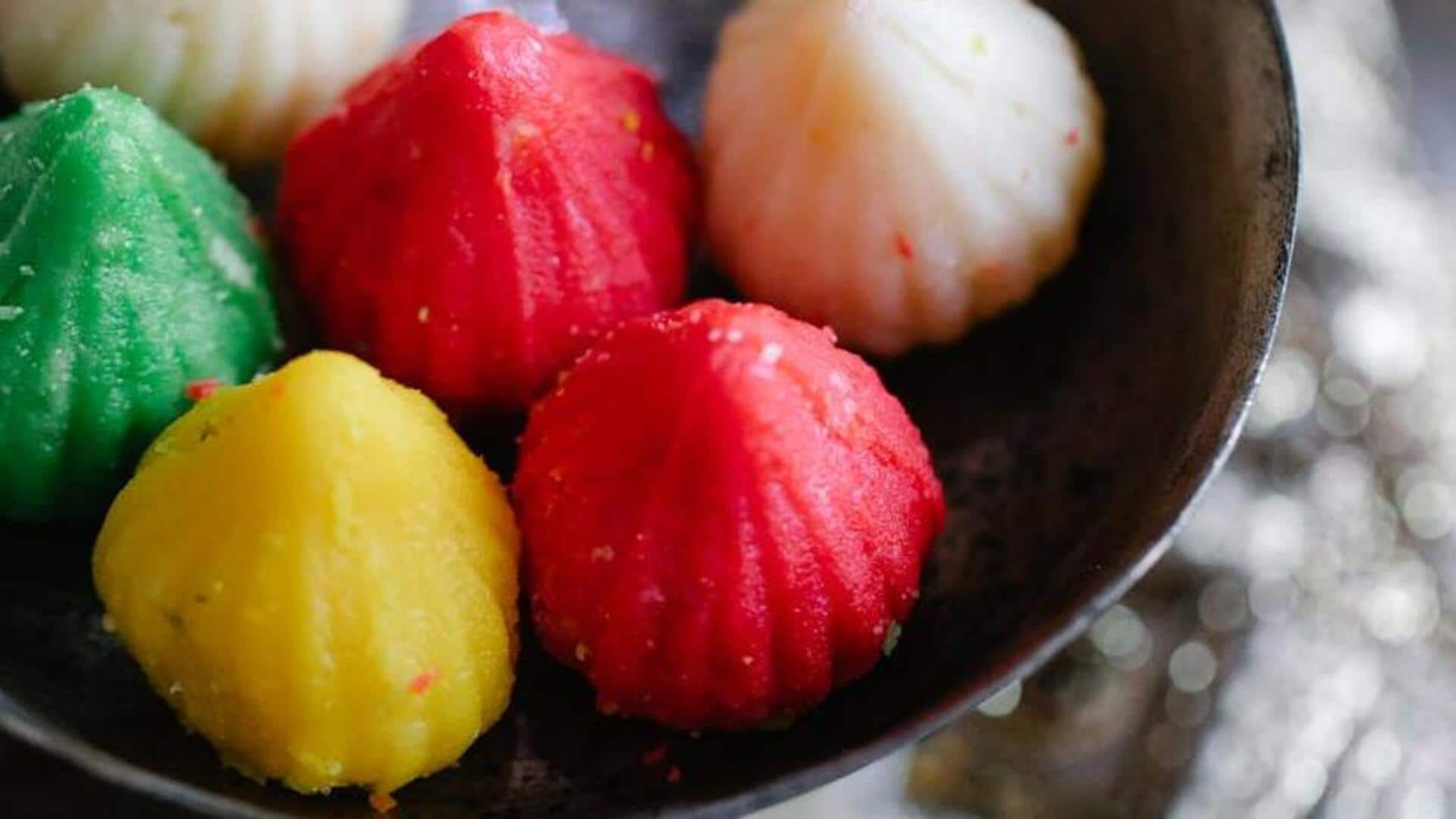
The spiritual essence of modak-making
What's the story
Modaks are not just a sweet, they are an integral part of India's cultural and spiritual heritage. Primarily served during the Hindu festival Ganesh Chaturthi, these dumplings of joy are considered the favorite food of Lord Ganesha. Crafting modaks is a delicate art, requiring precision, patience, and devotion. It's a beautiful blend of culinary art and spiritual tradition.
History
Historical origins and evolution
The art of modak making is rooted in antiquity, with references in holy scriptures. In the beginning, they were basic rice flour dumplings stuffed with a mixture of coconut and jaggery. Over the centuries, regional variations developed, adding dry fruits, nutmeg, and saffron. This culinary evolution reflects not only changes in diet but also the resilience and adaptabilityjoy dumplings are considered Lord Ganesha's favorite food traditions over time.
Symbolism
Symbolism in ingredients
Each element of a modak holds deep spiritual symbolism. The outer rice flour shell signifies the vastness of the cosmos or universe, while the sweet filling within symbolizes the divine bliss of life's experiences. The process of molding modaks is considered a sacred act, representing the creation of harmony between the material (outer shell) and spiritual (inner sweetness) realms.
Rituals
Rituals and celebrations
Why do we offer 21 modaks to Lord Ganesha during Ganesh Chaturthi? The tradition of offering 21 modaks as prasad or naivedya to Lord Ganesha during Ganesh Chaturthi holds deep spiritual significance. This act of devotion represents the surrender of one's ego and a request for wisdom and prosperity. Plus, it unites families in the preparation of these sweets, promoting harmony and imparting traditional values to the youth.
Techniques
Culinary techniques across regions
The recipe for modaks differs greatly among India's vast and diverse regions. In Maharashtra, steamed rice flour modaks known as 'Ukadiche Modak' are favored, while in South India, fried modaks or those made with wheat flour are preferred. And, some people also make chocolate or mango-flavored modaks, appealing to modern palates while staying true to their spiritual significance.
Tips
Tips for perfect modak-making
You can't attain perfection in making modaks in a day, but ensure the dough is kneaded to the right consistency, not too soft or too hard. Also, use fresh coconut for the filling to maximize flavor and steam the modaks on medium flame to avoid overcooking. And, most importantly, be patient - take your time to shape each modak carefully, ensuring they are sealed well without breaking.